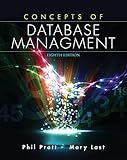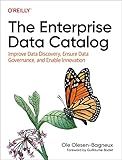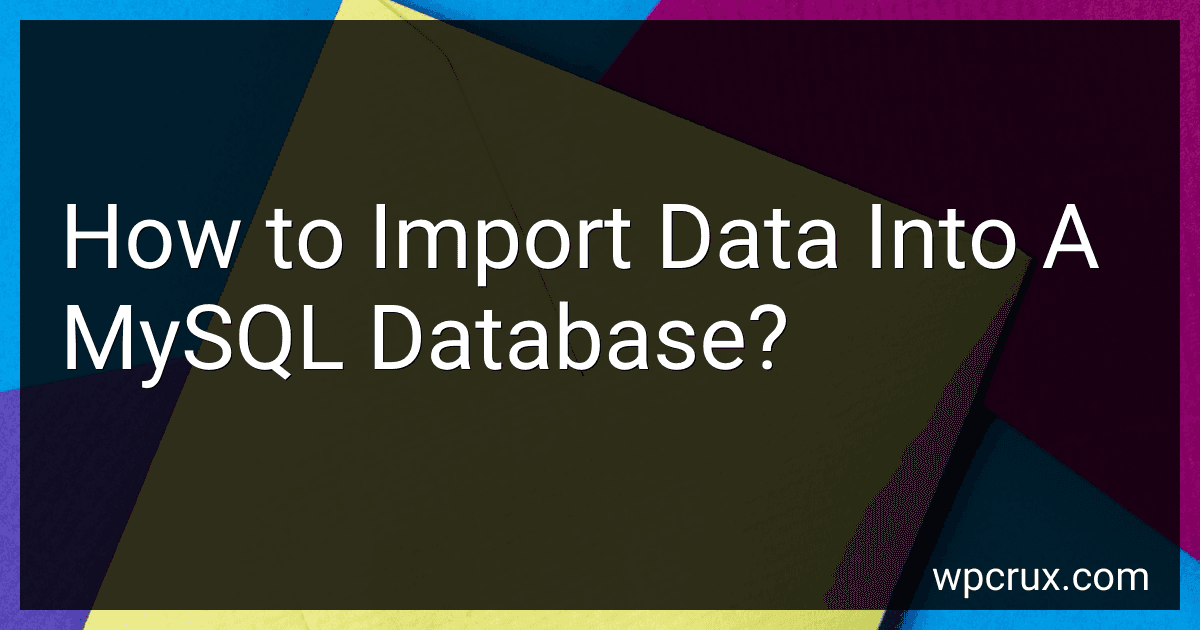Best Database Management Tools to Buy in October 2025

Database Systems: Design, Implementation, & Management



Database Systems: Design, Implementation, & Management



Concepts of Database Management (MindTap Course List)



Data Mining: Practical Machine Learning Tools and Techniques (Morgan Kaufmann Series in Data Management Systems)
- INNOVATIVE FEATURES THAT SET US APART FROM COMPETITORS.
- ATTRACTIVE DESIGN THAT APPEALS TO MODERN CONSUMERS.
- EXCEPTIONAL QUALITY ENSURING CUSTOMER SATISFACTION AND LOYALTY.



Concepts of Database Management



Customer Relationship Management: Concept, Strategy, and Tools (Springer Texts in Business and Economics)



The Enterprise Data Catalog: Improve Data Discovery, Ensure Data Governance, and Enable Innovation



The Manga Guide to Databases (The Manga Guides)


To import data into a MySQL database, you can follow these steps:
- Prepare your data: Make sure your data is in a compatible format such as CSV (Comma Separated Values) or SQL dump file. Ensure the data is properly formatted and organized for import.
- Access the MySQL server: Use the terminal or a MySQL client to connect to the MySQL server where your database is located. You will need the server address, username, and password for authentication.
- Select the database: If you have multiple databases, select the one you want to import data into using the USE command followed by the database name.
- Import the data: Use the LOAD DATA INFILE command to import data from a CSV file. Specify the file path and format options if necessary. Alternatively, if you have an SQL dump file, use the SOURCE command followed by the file path to execute the SQL statements within the dump file.
- Verify the import: Once the import process completes, you can check the imported data by running SELECT queries on your database tables.
It is important to note that depending on the size and complexity of your data, the import process may take some time. Also, ensure that the MySQL user you are using has the necessary privileges to perform the import operation.
How to import JSON data into a MySQL database?
To import JSON data into a MySQL database, you can follow these steps:
- Create a table in MySQL with the corresponding columns that match the fields in your JSON data.
- Convert the JSON data into a delimited format such as CSV or TSV. There are various online tools available to convert JSON to CSV.
- Use the MySQL LOAD DATA INFILE statement to load the converted CSV/TSV file into the table. The syntax is as follows:
LOAD DATA INFILE 'path/to/file.csv' INTO TABLE table_name FIELDS TERMINATED BY ',' ENCLOSED BY '"' LINES TERMINATED BY '\n' (column1, column2, ..., columnN)
Replace path/to/file.csv with the actual path to your converted file, table_name with the name of your table, and (column1, column2, ..., columnN) with the list of columns from your table.
- Execute the LOAD DATA INFILE statement within the MySQL shell or through a MySQL client program.
Alternatively, you can use a MySQL client library in your preferred programming language to parse the JSON data and insert it directly into the MySQL database. Below is an example in Python using the mysql-connector-python library:
import json import mysql.connector
Connect to the MySQL database
cnx = mysql.connector.connect(user='your_user', password='your_password', host='your_host', database='your_database') cursor = cnx.cursor()
Read the JSON file
with open('data.json') as file: data = json.load(file)
Iterate over the JSON data and insert into the table
for item in data: query = "INSERT INTO table_name (column1, column2, ..., columnN) VALUES (%s, %s, ..., %s)" values = (item['col1'], item['col2'], ..., item['colN']) cursor.execute(query, values)
Commit the changes and close the connection
cnx.commit() cursor.close() cnx.close()
Ensure you replace 'your_user', 'your_password', 'your_host', 'your_database', 'data.json', 'table_name', 'column1', 'column2', ..., 'columnN' with the appropriate values for your setup.
Choose whichever method suits your needs and experience better.
How to import data into a MySQL database without overwriting existing data?
To import data into a MySQL database without overwriting existing data, you can follow these steps:
- Prepare the data: Format your data in a compatible format like a CSV (Comma-Separated Values) file or SQL dump file.
- Create a temporary table: To avoid overwriting existing data, create a temporary table to import the data into before merging it with the existing table.
- Load the data into the temporary table: Use the LOAD DATA statement to import the data from your file into the temporary table. The specific syntax may vary based on the format of your data. For example, to import a CSV file: LOAD DATA INFILE '/path/to/your_file.csv' INTO TABLE temporary_table FIELDS TERMINATED BY ',' OPTIONALLY ENCLOSED BY '"' LINES TERMINATED BY '\n' IGNORE 1 ROWS;
- Merge the temporary table with the existing table: Use SQL statements like INSERT INTO... SELECT or UPDATE... JOIN to merge the data from the temporary table with the existing table. For example, to insert new records from the temporary table: INSERT INTO existing_table SELECT * FROM temporary_table WHERE unique_id NOT IN (SELECT unique_id FROM existing_table); Or to update existing records: UPDATE existing_table e JOIN temporary_table t ON e.unique_id = t.unique_id SET e.column1 = t.column1, e.column2 = t.column2;
- Remove the temporary table: Once the data has been merged, you can drop the temporary table to clean up. DROP TABLE temporary_table;
By following these steps, you can safely import new data without overwriting existing data in your MySQL database.
How to import date and time data into MySQL database fields?
There are a few ways to import date and time data into MySQL database fields. Here are two common methods:
- Use the LOAD DATA INFILE statement: This method allows you to load data from a text file into a MySQL table. You can specify the format of the date and time data in the file using the STR_TO_DATE function to convert it to the MySQL date and time format. Here's an example:
Assume you have a file named data.txt with the following content:
1,2022-01-01 10:30:00 2,2022-02-15 15:45:00 3,2022-03-20 08:00:00
You can import this data into a table named mytable with two columns: id (int) and datetime (datetime) using the following SQL statement:
LOAD DATA INFILE '/path/to/data.txt' INTO TABLE mytable FIELDS TERMINATED BY ',' LINES TERMINATED BY '\n' (id, @datetime) SET datetime = STR_TO_DATE(@datetime, '%Y-%m-%d %H:%i:%s');
- Use scripting or programming language: Another option is to use a scripting or programming language (such as Python, PHP, or Java) to read the date and time data from a file and insert it into the MySQL database. In the code, you can use functions or libraries specific to the language to parse and convert the date and time data into the appropriate format before inserting it into the database.
For example, in Python using the pandas library, you can read a CSV file containing date and time data, parse it using the pd.to_datetime() function, and insert it into the MySQL database using the pandas method [to_sql](https://topminisite.com/blog/how-to-use-to_sql-in-pandas)().
import pandas as pd from sqlalchemy import create_engine
Read the CSV file
data = pd.read_csv('/path/to/data.csv')
Parse the date and time column
data['datetime'] = pd.to_datetime(data['datetime'])
Connect to the MySQL database
engine = create_engine('mysql://user:password@host/database')
Insert the data into the MySQL table
data.to_sql('mytable', con=engine, if_exists='append', index=False)
These methods can help you import date and time data into the MySQL database fields in various formats. You may need to adjust them based on your specific requirements and the format of your data.
How to import data into a MySQL database from an FTP server?
To import data into a MySQL database from an FTP server, you can follow these steps:
- Connect to the FTP server: Use an FTP client program or command-line tools to establish a connection to the FTP server. Provide the necessary credentials (username and password) to access the FTP server.
- Navigate to the directory containing the data file(s) you want to import: Use the command cd or the graphical interface of the FTP client to navigate to the directory on the FTP server where the data file(s) are located.
- Download the data file(s) to your local machine: Use the get or mget command in the FTP client to download the data file(s) from the FTP server to your local machine or server where MySQL is installed.
- Access the MySQL command-line interface: Open the terminal or command prompt and log in to the MySQL command-line interface using appropriate credentials.
- Create a database (if needed): If the database in which you want to import the data does not exist, you can create it using the CREATE DATABASE command.
- Select the appropriate database: Use the USE command to select the database in which you want to import the data.
- Import the data: Use the LOAD DATA INFILE statement to import the data into the MySQL database. Provide the path to the downloaded data file(s) and specify any necessary options such as field terminators, line terminators, and table names.
Example command:
LOAD DATA INFILE '/path/to/downloaded/file.csv' INTO TABLE tablename FIELDS TERMINATED BY ',' ENCLOSED BY '"' LINES TERMINATED BY '\n';
Replace /path/to/downloaded/file.csv with the actual path of the downloaded data file(s) and tablename with the name of the table in which you want to import the data.
- Verify the data import: Once the import is complete, you can run queries in the MySQL command-line interface to verify that the data has been successfully imported into the database.
Remember to clean up and delete the downloaded data file(s) from your local machine or server after the import process is complete.
How to import CSV data into a MySQL database?
To import CSV data into a MySQL database, you can follow these steps:
- Log in to your MySQL server using a client like MySQL Workbench or the MySQL command-line tool.
- Create a new database or use an existing one where you want to import the CSV data. CREATE DATABASE your_database_name; USE your_database_name;
- Create a table with appropriate columns to match the CSV file's structure. Make sure the column names and data types in the table match the headers and values in the CSV file. CREATE TABLE your_table_name ( column1 datatype, column2 datatype, ... );
- Save your CSV file in a suitable directory accessible by your MySQL server.
- Use the LOAD DATA INFILE statement to import the CSV file into your table. LOAD DATA INFILE '/path/to/your/csvfile.csv' INTO TABLE your_table_name FIELDS TERMINATED BY ',' ENCLOSED BY '"' LINES TERMINATED BY '\n' IGNORE 1 ROWS; /path/to/your/csvfile.csv should be replaced with the actual path to your CSV file. FIELDS TERMINATED BY ',' specifies the field delimiter character (e.g., comma). ENCLOSED BY '"' specifies the character used to enclose string values (optional). LINES TERMINATED BY '\n' indicates the line termination character. IGNORE 1 ROWS is used to skip the header row if present in the CSV file.
- After executing the LOAD DATA INFILE statement, the CSV data will be imported into the table in MySQL.
Make sure you have necessary permissions to execute the above steps.
